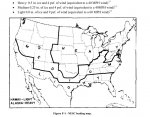Electriman
Senior Member
- Location
- TX
Guys,
I am working on a project that It has a short run of over head line and I need to calculate the wire size and the number of poles that are required to feed the transformer. I was wondering if you know any guide that I can use for my calculation.
Thank you in advance.
I am working on a project that It has a short run of over head line and I need to calculate the wire size and the number of poles that are required to feed the transformer. I was wondering if you know any guide that I can use for my calculation.
Thank you in advance.

